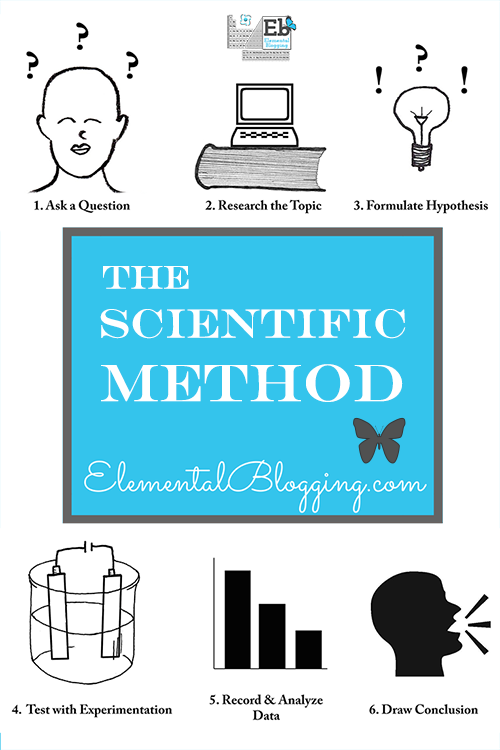 So what is the scientific method?
So what is the scientific method?
Well in a nutshell, the scientific method trains the brain to examine and observe before making a statement of fact.
It is the main method scientists use when asking and answering questions. And using the scientific method will teach your students to look at all the evidence before making a factual statement.
In today’s science corner, I wanted to explain each of these steps in detail.
The Steps of the Scientific Method
The following steps are key to the scientific method:
Step 1: Ask A Question
The scientific method begins with asking a question about something that has been observes. Good questions must be about something that can be measured. They typically begin with how, what, when, who, which, why or where.
Step 2: Do Some Research
One needs to read about the topic from the question so that he or she will have some background knowledge of the topic. This will keep the scientist from repeating mistakes that have been made in the past.
Step 3: Formulate a Hypothesis
A hypothesis is an educated guess about the answer to your question. The hypothesis must be measurable and answer the original question you asked. (Note: If you have younger students you may want to skip step 2 and 3 as it will be challenging for them to understand and do.)
Step 4: Test with Experimentation
The experiment tests whether the hypothesis is true or false. It is important for the test to be fair, so this means that the scientist may need to run multiple tests. He or she will be sure to only change one factor at a time in the experiment so that he or she can determine which factor is causing the difference.
Step 5: Record and Analyze Observations or Results
During the experiment, the scientist will record all his or her observations. Once the experiment is complete, he or she will collect and measure all the data to see if the hypothesis is true or false. The scientist will often find that his or her hypothesis was false. If this is the case, he or she will formulate a new hypothesis and begin the process again until he or she is able to answer the question.
Step 6: Draw a Conclusion
Once the scientist has analyzed the results, he or she can make a statement about what he or she has found. This statement communicates the results of the experiment to others.
THE FINAL PRODUCT
When you teach your students to use the scientific method, it will train their brain to answer the questions they have in a logical manor. If this all sounds intimidating, it’s not.
Remember, you are simply teaching your students to take the time to discover the answer to a given problem by using the knowledge they have as well as the things they observe and measure during an experiment.
 Sign up below to receive weekly tips & tools for homeschool science and we'll send you a FREE copy of
Sign up below to receive weekly tips & tools for homeschool science and we'll send you a FREE copy of 
[…] before making a statement of fact. I recently wrote a Science Corner post that shared more about the scientific method as well as a blank experiment write-up from. If you have a science background, you can come up […]